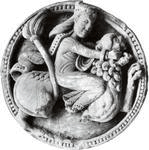

© 2013
Site designed/maintained by



Home - Archives - Online Records - Programme - Publications - Events - How to Join
VISITS & WALKS 2016


Around twenty members enjoyed a tour of the historic hill-top
town of Malmesbury in Wiltshire, which vies with Barnstaple
for the title of Englandís oldest borough. With rivers on three
sides the site was on obvious one for a fort from the earliest
times before it grew into a major town in the Saxon period.
The remains of the Abbey, founded in the 12th century, which
we see today, are only one third of the original structure
which, with its spire rising to over 400 feet, must have made a
magnificent sight on the skyline. Unlike Keynsham, the
town was not on any main routes and hence has experienced little redevelopment over the last few
hundred years, meaning that it retains the old street plan and many fascinating buildings. Local
historians Charles and Valerie Vernon gave our group a fascinating walk round the town, pointing out
many buildings and features that an unaccompanied visitor would overlook.
MAY 17th GUIDED WALK - BRISTOL AND THE SLAVE TRADE


Bristol has many connections with the Slave Trade and its abolition. Society treasurer, Keith Norton,
led members on a tour of part of the central area, to discover the buildings that link the City to the
Slave
Trade and its eventual abolition. The status and success of
the various merchants, businessmen and professionals
involved was reflected in the houses they built and their
locations. The tour took us from M-shed along to
Redcliffe Parade and to some curious survivors in Guinea
Street - a name of West African origin - and to Queen
Square, once the cityís top address, where we heard about
some of its more eminent residents. There is a lot of
history in the buildings of central Bristol and our
interesting visit showed just one aspect of this; one that
until recently has been rather hidden.
APRIL 23rd GUIDED WALK AROUND MALMESBURY


The Starfish Control Bunker near Tynings Farm
After lunch at one of the pubs on the plateau, we drove to
Black Down to visit the Starfish Decoy site, built to lure
German bombers away from Bristol in World War II. A
recent research project has unearthed much information but
apart from the control bunker, shown in the picture, physical
remains are limited. Our guide was Ruth Coleman, who led
the research. She explained how the site operated and took us
to the bunker, which also housed the generators that provided
power to the site. We then walked across the moorland to see
where the lights and flares replicating target sites in Bristol
including Canons Marsh and Temple Meads were situated.
After the War the site was almost completely cleared but it was fascinating to see the site and to
speculate on whether it succeeded in its aim; there appears to be little evidence that it had any
measurable effect.
JUNE 8th COACH TRIP TO KINGSTON LACEY, DORSET AND SHAFTESBURY
Kingston Lacy House is a 17th century property near Wimborne, built by the flamboyant Bankes family in an Italianate style, and is home to their large collection of paintings and other treasures from across Europe and Egypt.


Above left – Kingston Lacey House and right - Gold Hill made famous by the bread tv commercial of the 70`s
Thirty-five members of the Society enjoyed a day visit by coach to the House, now owned by the National Trust. We were split into small groups and some very knowledgeable guides gave us the stories behind the priceless artworks and furniture. After time exploring the gardens and grounds, the group took a break at Shaftesbury before returning home.
JULY 9th VISITS TO WARTIME AND DEFENCE SITES ON MENDIP
A dozen members first visited a relic of the Cold War that was little known at the time and is even less known to-day. In the late 1950’s the government set up a network of about 1600 monitoring stations across Britain, staffed by the volunteers of the Royal Observer Corps, to determine the position of any nuclear blasts and then to measure the resulting fallout. Few of these stations survive but one, on the Mendips above West Harptree, has been kept in its original condition and is open, by arrangement, to groups of visitors.
At ground level there was little to see, but climbing down a 12ft vertical ladder takes you into a rectangular concrete box slightly smaller than a domestic garage. In the event of attack, this would have been home to three men for a fortnight. Former Chief Observer Mike Parfitt demonstrated how the various items of monitoring equipment operated and explained the communications arrangements. Dating from the pre-digital age, the techniques seemed somewhat primitive but fortunately their efficacy was never put to the test. It was an unusual but interesting place to discover.
A dozen members first visited a relic of the Cold War that was little known at the time and is even less known to-day. In the late 1950’s the government set up a network of about 1600 monitoring stations across Britain, staffed by the volunteers of the Royal Observer Corps, to determine the position of any nuclear blasts and then to measure the resulting fallout. Few of these stations survive but one, on the Mendips above West Harptree, has been kept in its original condition and is open, by arrangement, to groups of visitors.
At ground level there was little to see, but climbing down a 12ft vertical ladder takes you into a rectangular concrete box slightly smaller than a domestic garage. In the event of attack, this would have been home to three men for a fortnight. Former Chief Observer Mike Parfitt demonstrated how the various items of monitoring equipment operated and explained the communications arrangements. Dating from the pre-digital age, the techniques seemed somewhat primitive but fortunately their efficacy was never put to the test. It was an unusual but interesting place to discover.


Above left - Mike Parfitt demonstrates how the direction finding sensor worked. Right – The underground bunker
AUGUST 6th VISIT TO CLAVERTON PUMPING STATION
A group of about twenty members and friends visited this unique piece of engineering on a very warm day. Our guides explained how canal engineer John Rennie designed the pumping station to lift water from the Avon a height of 48ft/15m up to the Kennet & Avon Canal to provide sufficient water to operate the locks at Bath. A huge waterwheel uses the power of the river water to drive two 18inch/46cm diameter lift pumps which move water from the mill leat to the canal. The inside of the pumping station is dominated by the twin 18ft/5m long rocking beams that operate the pumps and the drive wheels that transfer the power from the water wheel to them. Some alterations have made over the years, particularly to the water wheel, but the simplicity of the concept enabled the pumping station to operate continuously from 1813 to 1952 – and all without consuming any fuel. It is an impressive piece of machinery and is today maintained and operated for display purposes by a small group, of dedicated volunteers.
A group of about twenty members and friends visited this unique piece of engineering on a very warm day. Our guides explained how canal engineer John Rennie designed the pumping station to lift water from the Avon a height of 48ft/15m up to the Kennet & Avon Canal to provide sufficient water to operate the locks at Bath. A huge waterwheel uses the power of the river water to drive two 18inch/46cm diameter lift pumps which move water from the mill leat to the canal. The inside of the pumping station is dominated by the twin 18ft/5m long rocking beams that operate the pumps and the drive wheels that transfer the power from the water wheel to them. Some alterations have made over the years, particularly to the water wheel, but the simplicity of the concept enabled the pumping station to operate continuously from 1813 to 1952 – and all without consuming any fuel. It is an impressive piece of machinery and is today maintained and operated for display purposes by a small group, of dedicated volunteers.


The mechanism explained
SEPTEMBER 14th COACH TRIP TO BLACK COUNTRY LIVING MUSEUM
An unseasonably warm day made exploring the many reconstructed Victorian-era houses, shops and workshops at the Museum very enjoyable, while those wanting to cool down sampled the local ale in the sawdust-strewn pub or took a boat ride into the limestone caverns next to the site. The Museum covers a 26-acre site and many of the buildings, including shops and the school, are staffed by very knowledgeable guides in period dress to give an insight into 19th and early 20th century industrial life. Many of the practices and products continued into the 1940s and 50s so it was a visit that brought back memories for many people in the party.
An unseasonably warm day made exploring the many reconstructed Victorian-era houses, shops and workshops at the Museum very enjoyable, while those wanting to cool down sampled the local ale in the sawdust-strewn pub or took a boat ride into the limestone caverns next to the site. The Museum covers a 26-acre site and many of the buildings, including shops and the school, are staffed by very knowledgeable guides in period dress to give an insight into 19th and early 20th century industrial life. Many of the practices and products continued into the 1940s and 50s so it was a visit that brought back memories for many people in the party.


Above left – Main Street and right – boat trip through the many tunnels





















